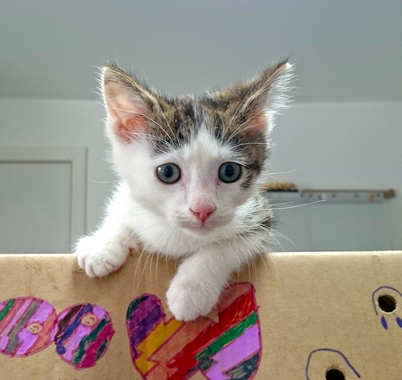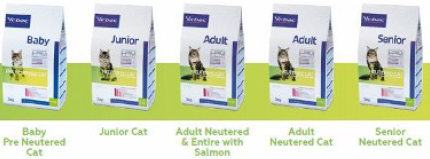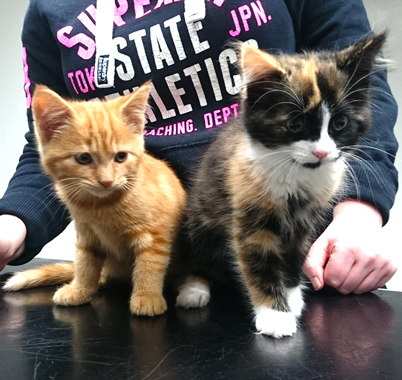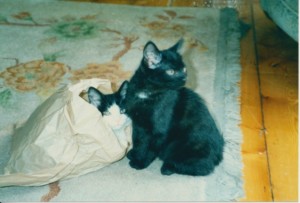At Westport Veterinary Clinic we recommend that a kitten health check be carried out within a few days of collecting your kitten, which is why we offer a free consultation for a kitten health check. At this time you can ask any questions that you may have.
We know only too well just how much new information there is to take in when expanding your family to include a feline friend, so we wrote this handy guide to help you with some of the things you may be wondering about as you settle your kitten into their new home and help them to grow into a happy, healthy, confident young cat. Please CLICK HERE for the new kitten Information sheet.
Vaccinations
Regular vaccinations are important to protect against infection with feline enteritis (panleucopaenia), rhinotracheitis, calicivirus and feline leukaemia virus. First vaccinations can be given from 9 weeks of age, followed by a second vaccination 3-4 weeks later. Onset of immunity occurs approximately 3 weeks after the second vaccination.
After this primary vaccination course it is important to keep your pet up to date with yearly booster vaccinations to ensure continued protection. If your cat is remaining indoors we still strongly advise vaccination against panleucopaenia, rhinotracheitis and calicivirus as these do not require direct cat-to-cat contact to spread.

Parasite medications – fleas, ticks, roundworms, tapeworms and lungworms
We advocate using appropriate parasite prevention throughout your pet’s life, both for their health and the health of their human family!
For hunting cats, or those who may be hunting, we advise using a monthly Broadline spot-on, to provide your cat with comprehensive anti-parasitic cover (against fleas, ticks, roundworm, tapeworm and lungworm). Indoor cats can still be vulnerable to fleas and roundworm, as we can carry infection into the house on our shoes and clothes, so for these cats we recommend a monthly Prinovox spot-on, which covers for these parasites. Cats who venture out to the garden occasionally but are definitely not hunting require Broadline every 3 months, and Prinovox on the other 2 months. All of these options are available monthly on our healthcare plan, Friends of Westport.
Lungworm can cause serious health problems and prevention is always better than cure. Ticks are no longer a problem only of rural areas, and can transmit potentially life-threatening diseases. Heavy roundworm burdens can cause serious disease in young animals, including intussusceptions; they also pose a human health risk.
For all of these reasons and more, it is important to follow veterinary recommendations for parasite prevention. Veterinary anti-parasitic products have been clinically proven to be safer and more effective than ‘over the counter’ versions bought at pet shops and supermarkets.
Microchipping
We strongly advise getting your cat microchipped, even if you intend for them to always be indoors, as there is always the chance of them escaping and getting lost. Microchipping can be carried out during a health check or done at the time of neutering at a reduced rate.
A microchip is a tiny chip, the size of a grain of rice, which is implanted under the skin between the shoulder blades. It contains a number unique to your pet, which is then registered with a microchip database, along with your name, address and contact details. This means, if your pet was ever to get lost, they could be scanned when found and the database searched for your details, so they could be safely reunited with you.
For this reason, it is very important to keep your registered details up to date. If your kitten is microchipped with us, we will initially register the chip; if your kitten was already chipped when you got them, you’ll want to check your details have been added to the system. If any of your contact details change in the future, it’s important to update the information you have registered. Please ask if you have any questions or concerns about this.
Feeding
Getting the right nutritional balance is very important at all stages in your pet’s life, to ensure healthy development and growth.
The best way to achieve this is by feeding a high quality, protein based, balanced diet especially formulated for kittens e.g. Virbac Veterinary HPM (HyperPreMium) Veterinary HPM™ is an advanced low-carb, high-protein formulation specifically designed to support the long-term health and well-being of cats and dogs, the highly evolved carnivores in our own homes.
We offer buy one get one free on your first bag of kitten food as well as getting your 6th bag free as part of our loyalty scheme!

Insurance
We strongly advise getting your new kitten insured as soon as possible, to give you peace of mind that your pet is covered should they need it. A lifetime policy is the most comprehensive cover available (covers your pet year after year even for long-term conditions, so long as you don’t change policies) and we would always recommend opting for the highest payout you can afford. Pet insurance is one area of life where it is certainly worth checking the fine print; for example, does a particular policy cover any dental work your pet may require during their lifetime?
We work in partnership with Petplan to offer 4 weeks of free insurance as Immediate Veterinary Cover; we can start the process of setting this up as soon as your kitten has been checked over by one of our vets. This will be activated by yourself via the email you will receive from Petplan.
Please use these 4 weeks to look around at the different insurance companies and policies to find out which is best for you. If you have any questions please ask one of our team.
Friends of Westport
Prevention is better than cure so we want to make preventative health care easy and affordable. Our Friends of Westport scheme covers the preventative treatments your pet needs throughout life, such as vaccinations, flea, tick and worming treatments and regular health checks.
Using our scheme can save up to 37% on just the essential preventative health care.
Extra benefits include a 10% discount off nearly everything (most products and procedures undertaken exclusively at our practice).

Dental Care
Periodontal disease is a serious but often overlooked health issue; indeed, around 90% of cats have some form of this progressive, degenerative disease. Cats are very good at hiding dental pain from us, but believe us, it is sore!
The best time to start dental care for your kitten is now! Getting them in a routine is much better and easier than having to start after they already have sore mouths. We also advise using Healthymouth water additive, which has been shown to reduce plaque build up in cats by an average of 81.3%. At the regular weight checks up until 6-8 months old, our vets and nurses will show you how to introduce dental care products.

Neutering
When your kitten is old enough, we strongly advise neutering (spay (females) or castration (males)). We carry this out from around 4 months of age.
Female cats can become pregnant from 4 months old and with a gestation period of around 63 days you could have many more kittens than you bargained for!
Entire male cats are more likely to be involved in road traffic accidents and cat fights. They will also roam much farther, increasing the risk of getting into trouble or lost.
Please chat to our team about how, why and when to arrange neutering for your kitten.
Habituating your kitten to teeth brushing, nail clipping and other handling
The accompanying handout, entitled ‘Protocol for Activities to Practice with your Puppy or Kitten’ is a really useful tool for getting your pet used to much of the handling they may need for routine healthcare, for example having eyes and ears checked, nails clipped or a ‘pill’ given.
Teaching your young pet that these procedures are not scary, and that they can even be fun or signal that a reward is coming, is a really useful life skill to give them.
With any of these activities, the key is to break it down into small stages, go at your kitten’s own pace, never force anything and ensure that they are rewarded for calm behaviour.
You can also start accustoming you kitten to grooming. This is particularly important if they are long-haired. Be gentle and start gradually, letting your kitten sniff the brush and starting with areas where they enjoy being petted. Aim to practice this briefly at least once a day.
Important resources within your cat’s territory: toys, litter trays, beds and other things your kitten will need
Cats have evolved as territorial creatures, and so feeling secure in their environment is of paramount importance to our feline friends. Providing your kitten with the following resources within their ‘territory’ (your house, or however much of the house they are allowed into) will help them to feel safe and happy and to settle in well.
Food and water:
- As cats evolved as hunters of small prey items, eating could be messy! Therefore, they don’t like to drink next to where they eat. It’s best to have at least one water source that is a room’s distance or more away from your kitten’s food bowl. Many cats like to drink out of a clear (glass or Perspex), wide, shallow bowl. If your kitten develops a preference for running water, you could provide a cat drinking fountain.
- They also understandably prefer their food to be positioned away from their litter tray. Shallow ceramic bowls or plates are a good choice for food dishes.
- You could also provide some of your kitten’s food in either home-made or shop-bought easy puzzle feeders; kittens can have endless fun with these and they will aid brain development (see http://foodpuzzlesforcats.com/ for some ideas).
- For cats, one of the most important determining factors in whether they will like a food is texture. They form these preferences in kittenhood, so it is worth getting your kitten used to at least a couple of different food textures in case you have to change their food type later in life.
- If you have more than one kitten, try to encourage them to eat from separate dishes, in case you ever need to feed them different diets, or in case one gets greedy!
Litter trays:
- Many cats prefer a degree of privacy when they toilet, so consider quiet corners for litter trays. Some cats prefer covered trays, but some don’t like that this can trap odour and so will prefer open trays.
- Just like with food, litter tray and litter type preferences are formed in kittenhood. We strongly advice getting your kitten used to at least a couple of different litter types, so that they cope well if this ever needs changed and so you have a back up option if they go off one litter type during, for example, an episode of cystitis.
- The tray should be at least 1.5 times your cat’s body length (from nose to tail base, not all the way to tail tip), so may need to grow as your cat does. Make sure the sides are low enough for short kitten legs to navigate easily.
- Soiled areas should be removed daily or more frequently and the tray cleaned out completely once a week using warm soapy water; avoid harsh chemicals.
- In terms of the number of trays, the general rule is to provide one tray per cat plus one extra.
Sleeping places, perches and hidey-holes:
- The cat’s world is very much a three-dimensional one. Whilst your kitten shouldn’t be allowed too high before they have learned balance and co-ordination, they will want to climb and providing low, relatively safe opportunities for this is important. You could clear space on low furniture or shelves and place cosy blankets in these areas. There are also plenty of commercially available cat trees.
- Most cats love to tuck themselves away in hidey-holes for naps. If you have ever seen a cat trying to squeeze themselves into an impossibly small box you know what we’re talking about! There are many fancy cat-hides available for purchase, but simple cardboard boxes on their side with blankets in can work just as well. Provide plenty of these.
- Cats sleep for around 16 hours a day – nice life, isn’t it?! For kittens this will generally be in short naps interspersed with exuberant playtime. Make sure your kitten has plenty of places to curl up for all of the shut-eye which is so important for healthy brain development.

Not your usual hidey-hole…most curious kittens love exploring new objects!
Scratching posts:
- These should be sufficiently tall to allow a fully grown cat to stretch out their legs when scratching.
- Most scratching occurs near thresholds (doorways, bottom of the stairs, etc) and near key resources (eg. the sofa!) so it’s worth thinking about having scratching posts near these rather than tucked away in corners.
Toys:
- Of course, for kittens, one of their most-loved activities is playtime! Through play, young animals learn how to interact with the world around them and the people and animals in it. They learn what behaviour is appropriate when interacting with humans and, if they encounter them, with other animals. They develop problem-solving abilities as they learn to manipulate objects such as food puzzles and to successfully ‘hunt’ a toy.
- Games that involve stalking and then an explosion of energy and activity with the pounce and “attack” most closely resemble hunting activity and so tend to be the games that kittens and cats most enjoy. Toys that mimic the hunting sequence (stalking, chasing and pouncing), such as wand toys, are often greatly enjoyed, as are toys that can be grappled with such as pretend mice or the Kong Kickeroo, found at this following link.
- Food puzzles, as mentioned before, can be another great source of play. Kongs can be stuffed with wet food or mashed-up kibble and will bounce in unpredictable directions, click here for a great example. Treat balls, such as this one from Catit, offer another brilliant source of fun for your kitten
- Safety during play:
- Choose well-made toys for you kitten that are too large to swallow.
- Check toys with small parts regularly to make sure they aren’t at risk of coming off and being eaten (eg. mouse tails).
- Wand toys/fishing rod toys are brilliant fun when you are around to play with your kitten, but they shouldn’t be left unsupervised with these, in case the elastic gets chewed off and swallowed.
- Never give your kitten string to play with as this can be dangerous if ingested.
The carrier:
- Whilst not always considered a ‘resource’, if the carrier can be made available all the time as a hidey-hole, you kitten is much more likely to see it as a safe space when they need to travel.
- Choose a carrier that feels sturdy and well-made. It should be big enough for your kitten to move around in easily and should be lined with cosy blankets. Whist fabric carriers can look attractive, cats often don’t feel as secure in them as these carriers tend to fold in on themselves.
- We like sturdy plastic carriers with easily detachable lids. This way, your kitten can be examined mainly in the base of their carrier if they feel more comfortable there and won’t have to be tipped out. Check before purchase how easy the carrier is to take apart; for example, do the clips at the sides make a loud noise or are there awkward catches at the front which make removal of the lid tricky?
- As cats like to hide, if the carrier has sides that are very easy to see through, cover it with a blanket for travel.
- Let you kitten explore their carrier and give them treats and toys in it, making sure they are comfortable there before they need to travel in it.
Socialisation and Habituation
Socialisation – this is how kittens learn to relate to and interact with people and other animals.
You can aid this by ensuring your kitten has positive interactions with as many people as possible: people of different ages, races and genders; people with funny hats, high vis vests, umbrellas, prams and walking sticks; men with beards; people talking loudly and laughing; and so on.
If you have other pets (eg. dogs), your kitten will need to learn to accept them and vice versa. Please ask if you would like any advice on how to do this.
Habituation – this is the process by which an animal learns which things in their world are normal and thus not to be worried about. This is about environments, objects and noises rather than social interaction. You will want to ensure your kitten is comfortable with noises around the house, such as hoovers, hairdryers, etc; with their travelling carrier; with car travel; and with anything else they may come across.
Further information on how to socialise and habituate kittens can be found at the website for the charity Cats Protection: https://www.cats.org.uk/help-and-advice/pregnancy-and-kitten-care/kitten-socialisation
Whilst this information is designed primarily for kittens in their second to eighth week of life, it’s still a useful checklist for continuing this process and particularly valuable if your kitten has missed out on any of their socialisation early on (although bear in mind you will need to move more slowly if this is the case).

An unconventional approach: this kitten appears to be familiarising herself with the kitchen utensils during her exploring!
Sensitisation – this is what happens if a young animal is exposed to too much, too fast. For example, if the first time your kitten experiences their new carrier, they are shoved in, put in a strange loud moving metal object (the car!), and then tipped unceremoniously onto a consulting table, then instead of learning that they don’t need to worry about the carrier, they will likely learn that carriers and cars are scary. On the other hand, if you start off with letting your kitten explore the carrier at home, rewarding them with treats or a game for sniffing it/going into it/etc, then get them used to having the door closed, being picked up, being taken to the car, the engine turned on and finally the car being moved, all the while rewarding relaxed behaviour and checking in with your kitten to ensure they are not anxious, then you have a much higher chance of convincing them that the carrier is a safe, relaxing and even fun place to be.
You can usually progress faster with bolder kittens, whereas shy kittens will take longer to get used to each new thing. Start with a small version of the stimulus and build up. The key is to keep checking in with your kitten; alert is fine, frightened isn’t. Aim for socialisation and habituation, NOT sensitisation.
Follow up W&W appointments
Due to the rapid growth and development all kittens experience during their first few months of life, we carry out regular weight and health checks with our nurses until your pet is at least 6 months old.
This ensures correct dosing relative to bodyweight for parasite prevention and allows us to check that your pet is a healthy weight. These appointments also provide fantastic opportunities to develop your kitten’s positive associations with spending time in the practice!
If you have any questions at all please call us at your local branch, contact details are at the bottom of the page.


